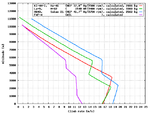What's the best radial (with a radial engine) fighter of '42 and why?
Best in fighter vs fighter mission, only fighter actually fightning in '42.
for memory a list of radial fighters on '42, maybe incomplete. i exclude biplane.
P-35
P-36/Hawk 75
P-43
Vanguard (they flying 20 interception sorties in '42 with no claims)
Wildcat
Buffalo
IAR 80
La-5
Fw 190 (until A-4 variant)
Army Type 1 Fighter "Oscar" (I variant)
Army Type 2 Fighter "Tojo" (I variant)
Navy Type 0 Carrier Fighter "Zeke" (until model 32)
Reggiane Re.2000
Fiat G.50
Macchi M.C.200
add
I-16
CW-21
were also some "transition" fighters with radial:
Navy Type 96 Carrier Fighter "Claude"
Army Type 97 Fighter "Nate"
Fokker D XXI
Best in fighter vs fighter mission, only fighter actually fightning in '42.
for memory a list of radial fighters on '42, maybe incomplete. i exclude biplane.
P-35
P-36/Hawk 75
P-43
Vanguard (they flying 20 interception sorties in '42 with no claims)
Wildcat
Buffalo
IAR 80
La-5
Fw 190 (until A-4 variant)
Army Type 1 Fighter "Oscar" (I variant)
Army Type 2 Fighter "Tojo" (I variant)
Navy Type 0 Carrier Fighter "Zeke" (until model 32)
Reggiane Re.2000
Fiat G.50
Macchi M.C.200
add
I-16
CW-21
were also some "transition" fighters with radial:
Navy Type 96 Carrier Fighter "Claude"
Army Type 97 Fighter "Nate"
Fokker D XXI





